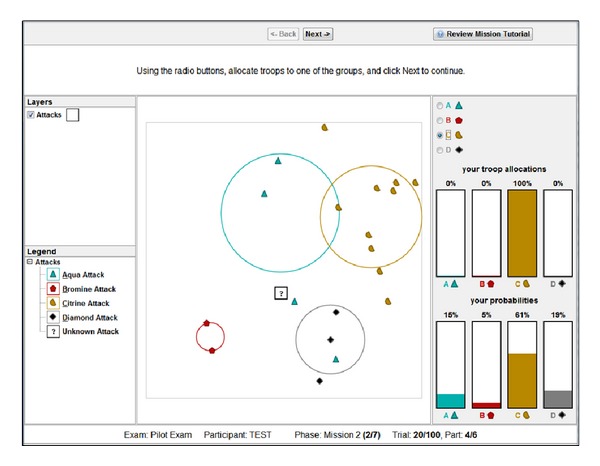Figure 4.

Sample output from Task 2. Participants must generate the likelihood that a probe event (denoted by the “?”) was produced by each category and then do a forced-choice resource allocation to maximize their trial score. In addition, participants had to draw a 2-to-1 boundary for each category whose boundary encapsulates 2/3 of that category's events and whose center represents the center of activity for that category. Likelihoods are based on the distance from each category's centroid and the frequency of events. For instance, Citrine has the highest likelihood because it has a higher frequency than the other categories, while Diamond has a marginally higher likelihood than Aqua and Bromine because it has the closest distance.
